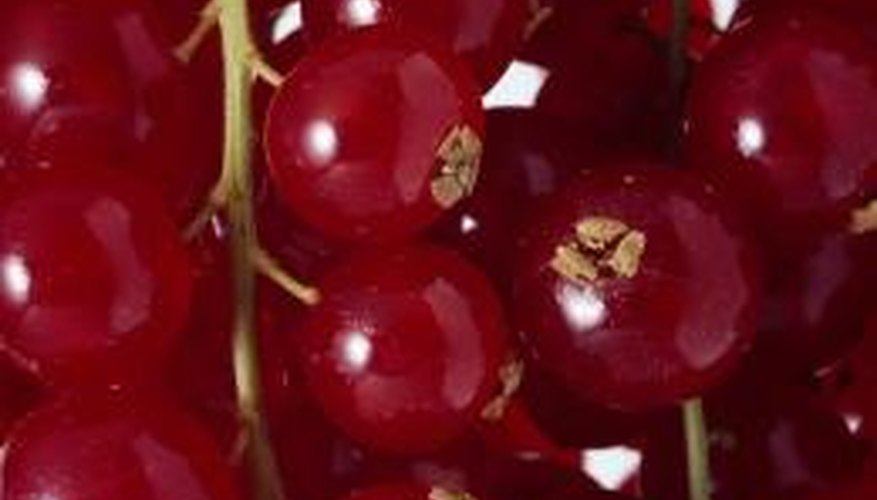According to the Colorado State University Extension, aphids are the most common garden insects. Red currant aphids lay eggs on many plants, including red currants, in 1/2-inch to 1-inch-long, swollen red lumps on the currant's stems in fall. When the aphids emerge from the swollen plant tissue in spring, they feed on young leaves and cause them to curl, blister and drop. In severe infestations, the red currant fruit doesn't develop properly. But most aphid infestations are fairly easy to control, as aphids are slow and defenceless. A season's worth of control methods are likely all you need to get rid of the insects.
Spray crawling aphids and visible colonies off the red currant with a stiff jet of water. Concentrate the spray on any aphids you see. Pay special attention to the underside of leaves and at stem junctures. The blast of water kills most of the aphids it comes into contact with. Those that survive and are knocked off the plant are unlikely to find their way back to the plant. If the jet spray blasts aphids onto nearby plants, spray the crawling aphids with an insecticidal soap or horticultural oil that's designed for use on aphids. Then follow the manufacturer's instructions for application rates and amounts. Insecticidal soaps and horticultural oil must come into contact with the aphids to kill them. Spray under leaves and at stem junctures to coat all of the crawling aphids.
- According to the Colorado State University Extension, aphids are the most common garden insects.
- Insecticidal soaps and horticultural oil must come into contact with the aphids to kill them.
Prune off any stems with swollen lumps of red tissue; these harbour aphid eggs. Prune before early spring to prevent the aphids from hatching. Place all pruned material in a double plastic bag, tie it off and throw it away.
Treat the red currant with a systemic insecticide specified for use on aphids the following season in early spring, if none of the above control methods solve the problem or if the aphids come back. Read the manufacturer's instructions for application rates and methods. Some are sprayed onto the red currant's foliage. Others are applied to the soil beneath the plant. Then the systemic insecticide is absorbed into the red currant's tissue and poisons aphids as they feed. Do not harvest the red currants produced that season. Read the label's instructions to find out the appropriate waiting period before it is safe to consume the crop again.
- Prune off any stems with swollen lumps of red tissue; these harbour aphid eggs.
- Treat the red currant with a systemic insecticide specified for use on aphids the following season in early spring, if none of the above control methods solve the problem or if the aphids come back.
TIP
To avoid pesticides and keep the aphid population down for good, contact your local county extension office for recommendations for natural insect predators suitable for your area. Aphids have no natural defences and are easy prey for the right type of insect. Ladybirds, hoverflies, lady beetles, green lacewings, flower (syrphid) flies and parasitic wasps all prey on aphids.
